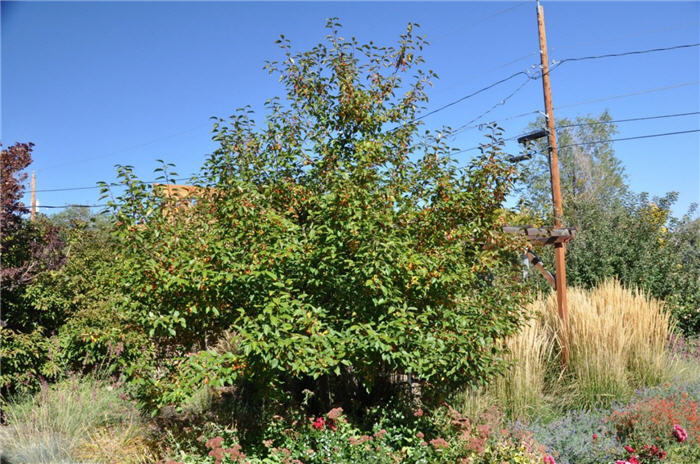| Botanical Name: Malus 'Red Jewel' | |
| Common Name: Red Jewel Crabapple |

-
Anatomy
-
Culture
-
Design
Plant Type
Tree
Height Range
12-25'
Flower Color
White
Flower Season
Spring
Leaf Color
Green
Bark Color
Brown, Grey
Fruit Color
Red
Fruit Season
Fall, Persistent
Sun
Full
Water
Medium, Extra in Summer
Growth Rate
Moderate
Soil Type
Clay, Loam
Soil Condition
Average, Rich, Well-drained
Soil pH
Acid, Neutral
Adverse Factors
n/a
Design Styles
English Cottage, Formal, Mediterranean, Ranch
Accenting Features
Espalier, Fall Color, Showy Flowers
Seasonal Interest
Winter, Spring, Summer, Fall
Location Uses
Background, Entry, Perennial Border, Shrub Border, Foundation, Patio, Walls / Fences
Special Uses
Screen, Mass Planting, Small Spaces
Attracts Wildlife
Birds
Information by: Stephanie Duer
Photographer:
Photographer:
-
Description
-
Notes
Red Jewel crabapple rounded form with strong horizontal branching, and grows about 15 feet tall and 12 feet wide. It has abundant white flowers, followed by cherry red, persistent fruit, which holds on well all winter, deepening in color as the months grow colder. Leaves are dark green. Moderately susceptible to scab, fireblight; slightly susceptible to powdery mildew.
Crabapples are well adapted to many soil types but appear to do best in clay loams and sandy clay loams. Soil pH should be slightly acidic to neutral to slightly alkaline (6.0 to 8.0). Plant in full sun, where nearby trees will not shade them excessively. Water regularly and deeply. See Resources for more information.